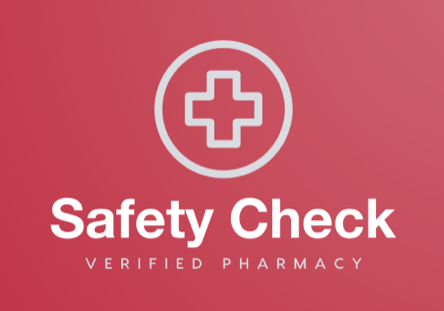
Need help? Start a web chat with one of our pharmacists or our customer service representatives now!
HOURS OF OPERATION:
Monday to Thursday
8 AM to 5 PM (CST)
Friday
8 AM to 4 PM (CST)
Lidoderm {Endo Pharmaceuticals}
lidocaine topical, pronounced LYE doe kane TOP i kal
Lidoderm is a medication that helps to reduce post-shingles pain. This numbing medication is a local anesthetic, and works by blocking nerve signals in your body. You may also be prescribed Lidoderm topical to help reduce discomfort and pain from sunburn, insect bites, poison ivy, poison oak, poison sumac, hemorrhoids, burns and minor cuts or scratches.
Lidoderm may be used for purposes not described in this medication guide.
Lidoderm can be dangerous if you receive an overdose. It can be fatal if too much Lidoderm is absorbed through your skin and into your blood. This could happen if you receive this medication without the supervision of a medical doctor, such as in a cosmetic procedure like laser hair removal. Take care to see a reputable and licensed doctor if you are receiving Lidoderm. Overdose symptoms may include convulsions or seizures, respiratory failure, uneven heartbeats and coma.
You should only receive a small amount of Lidoderm from a licensed doctor. Large amounts of Lidoderm are unnecessary and may harm you. You should also not apply heat, bandages, or plastic wrap to any area of your skin that has been treated with Lidoderm.
Do not use Lidoderm on skin that is cut or irritated, as you may inadvertently absorb more of this medication that way.
Lidoderm is in FDA pregnancy category B. This medication is not known to harm an unborn baby. However, tell your doctor if you are pregnant or become pregnant while using this medication. Lidoderm may pass into breast milk, so you should not breast-feed while taking this medication.
If you are allergic to lidocaine or any type of numbing medication you should not take Lidoderm.
If you are breastfeeding you should not take Lidoderm.
You should inform your doctor if you have broken, damaged, raw or blistered skin before taking Lidoderm.
You should inform your doctor if you are taking any of the following:
Other drugs you take that are not listed may interact with Lidoderm. You should tell your doctor about all of the medications you use. This includes prescription drugs, vitamins, supplements and herbal products, and over the counter medications. You should not begin taking a new medication without telling your doctor first.
You should take Lidoderm exactly your doctor has told you to. It is important that you do not take Lidoderm in larger or smaller amounts, or for longer or shorter than recommended. Follow the directions on your prescription label and follow any dose changes carefully if your doctor instructs you to change your dose.
Lidoderm should not be applied to skin that is blistered, raw, broken or damaged.
Lidoderm should not be used with any other topical medications unless your doctor has instructed you to do so.
Be aware that Lidoderm can be dangerous if you receive an overdose. It can be fatal if too much Lidoderm is absorbed through your skin and into your blood. Overdose symptoms may include convulsions or seizures, respiratory failure, uneven heartbeats and coma.
Take care not to get Lidoderm anywhere other than the area in which you were prescribed to use this medication. If you get Lidoderm in your eyes wash it out immediately.
Lidoderm should be stored at room temperature, and away from both moisture and heat.
If you miss a dose of Lidoderm you should attempt to take the missed dose as soon as you remember. However, if it is almost time for your next scheduled dose, or if your next dose is less than 12 hours away you should skip the dose you missed.
If you experience any of the following adverse effects you should stop taking Lidoderm and seek emergency medical help immediately.
Less serious side effects of Lidoderm may include:
It should be noted that this is not a complete list of possible side effects of Lidoderm. You should contact your physician for a complete list and medical advice regarding these effects.
Lidoderm is available as a patch, with 5 % lidocaine. Each adhesive patch contains 700 mg of lidocaine (50 mg per gram adhesive) in an aqueous base. The Lidoderm patch (lidocaine patch 5%) is offered in a carton of 30 patches, packaged into individual child-resistant envelopes.
If you suspect that you have overdosed with Lidoderm you should seek emergency help immediately.
Lidoderm has the main ingredient lidocaine, as a 5% patch. Inactive ingredients include dihydroxyaluminum aminoacetate, disodium edetate, gelatin, glycerin, kaolin, methylparaben, polyacrylic acid, polyvinyl alcohol, propylene glycol, propylparaben, sodium carboxymethylcellulose, sodium polyacrylate, D-sorbitol, tartaric acid, and urea.

The information contained in this drug guide is intended as an educational resource only. This guide is not exhaustive and does not contain all available information about this drug.This guide is not intended as medical advice for individual conditions or treatment.
The information provided in this guide does not replace the need for the advice and services of medical professionals or the need for medical examination. Always talk to your physician or pharmacist before taking any prescription medication or over the counter drugs (including any supplements) or before making any changes to your treatment. Only your doctor, nurse or pharmacist can provide you with safe and effective advice regarding your drug treatment.
The use of the information in this guide is at your sole risk. This information is provided "AS IS" with no warranties to accuracy or timeliness.
**All trademarks and registered trademarks are the property of their respective owners.